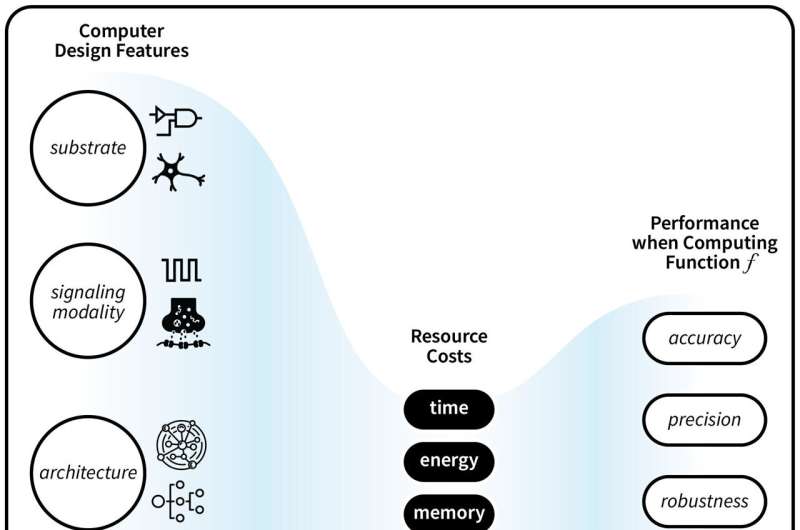
October 30, 2024 by Santa Fe Institute
Collected at: https://phys.org/news/2024-10-stochastic-thermodynamics-key-energy.html
Two systems exist in thermal equilibrium if no heat passes between them. Computers, which consume energy and give off heat as they process information, operate far from thermal equilibrium. Were they to stop consuming energy—say you let your laptop discharge completely—they would stop functioning.
But how does the amount of energy required by a physical system to perform a computation depend on the details of the computation?
Physicists and computer scientists have been trying to connect thermodynamics and computation for more than a century. The tradeoff has always been a theoretical concern, but the ubiquity of digital devices makes it a practical one, too. Until recently, researchers lacked a rigorous way to study these kinds of systems.
That changed in the early 21st century with the introduction of a new field called stochastic thermodynamics. “This was a major revolution in nonequilibrium physics,” says SFI Professor David Wolpert.
The field’s mathematical tools are exactly what scientists need to use to probe the inner workings of computational systems, since those systems are (far) out of equilibrium, according to a Perspective published this week in the Proceedings of the National Academy of Sciences. The authors, led by Wolpert and Jan Korbel, a postdoctoral researcher at Complexity Science Hub in Vienna, argue that stochastic thermodynamics can unearth deep connections between computation and thermodynamics.
“It provides us with the tools to investigate and quantify with equations all that’s going on with systems, even arbitrarily far from equilibrium,” Wolpert says. The tools include mathematical theorems, uncertainty relations, and even thermodynamic speed limits that apply to the behavior of nonequilibrium systems at all scales, from the very small to the macroscopic.
These considerations were absent in the work of 20th-century physicists, Wolpert says. “They provide us with a way to think about the actual energetics of these systems, and we’ve never had them before.”
Korbel notes that these tools can help researchers probe connections among energy, computation, and the effects on the climate. “Every calculation in every computer requires energy, some of which is lost as heat—warming not only the system but also the planet,” he says. “As the energy demands of computation continue to grow, it is essential to minimize these losses.”
Wolpert emphasizes that the potential gains from using stochastic thermodynamics reach far beyond artificial computers like laptops and phones. Cells carry out computations far from equilibrium; so do neurons in the brain. On larger time scales, social systems and even biological evolution operate out of equilibrium.
On a practical level, says Wolpert, a closer understanding of the energy of computation could point to more energy-efficient ways to design real-world devices. Findings in stochastic thermodynamics, he says, “are ubiquitous across anything we might consider to be computing. In many ways, it provides a unifying glue by which to relate and integrate all these different fields.”
More information: David H. Wolpert et al, Is stochastic thermodynamics the key to understanding the energy costs of computation? Proceedings of the National Academy of Sciences (2024). DOI: 10.1073/pnas.2321112121
Journal information: Proceedings of the National Academy of Sciences

Leave a Reply